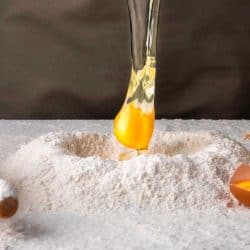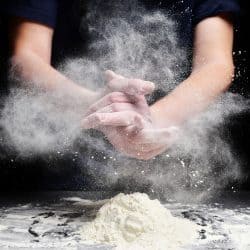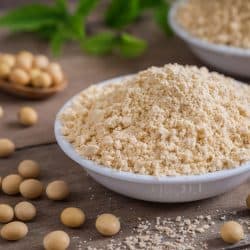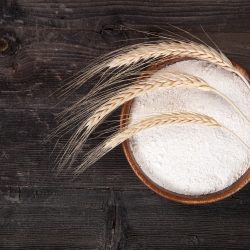Nothing says the weekend like a lazy Saturday morning pancake breakfast. The best part is that you can whip up a mouth-watering stack of fluffy, golden pancakes with just a few staple kitchen ingredients. The majority of pancake recipes call for all-purpose flour as the main ingredient. But what if Saturday morning rolls around and all you've got in the kitchen is self-rising flour? Can you still make those delectable pancakes you've been dreaming about all week? We believe no one should be deprived of a pancake breakfast, so we've researched to find the best answer to your flour dilemma.
Self-rising flour can be used to make pancakes. Many pancake recipes are written for self-rising flour. If you want to use your tried and true pancake recipe that calls for all-purpose flour, you can make simple adjustments to the recipe to accommodate the use of self-rising flour.
In this article, we take a closer look at self-rising flour, its uses, and how to use it in recipes. Keep reading to learn more!
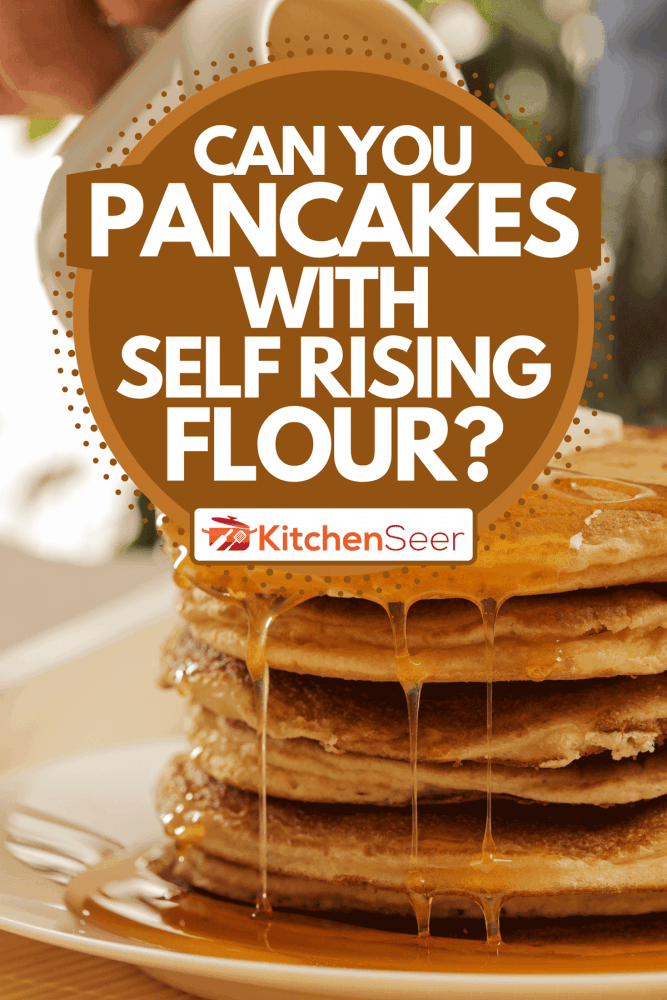
What is Self-Rising Flour?
We've been tossing around the term self-rising flour, but what is it exactly? A staple in Southern-style cooking, self-rising flour is a blend of flour, baking powder, and salt. As such, it already contains leavening ingredients; those are the ones that make your baked goods rise that are often added separately to recipes. It keeps recipes simpler by requiring fewer add-ins.
Another distinction of self-rising flour is that it is softer than all-purpose flour. This is because it has lower protein content than all-purpose flour and hence produces extra tender baked goods.
Click here to find King Arthur Self-Rising Flour on Amazon.
What Do You Use Self-Rising Flour For?
For starters, use self-rising flour when a recipe asks for it! Simple, right? Many recipes for biscuits, quick breads, muffins, waffles, and--you guessed it!--pancakes call for self-rising flour. If baked goods require a leavening agent, chances are you can find a recipe for them that uses self-rising flour instead of all-purpose flour. That includes both cookies and cakes!
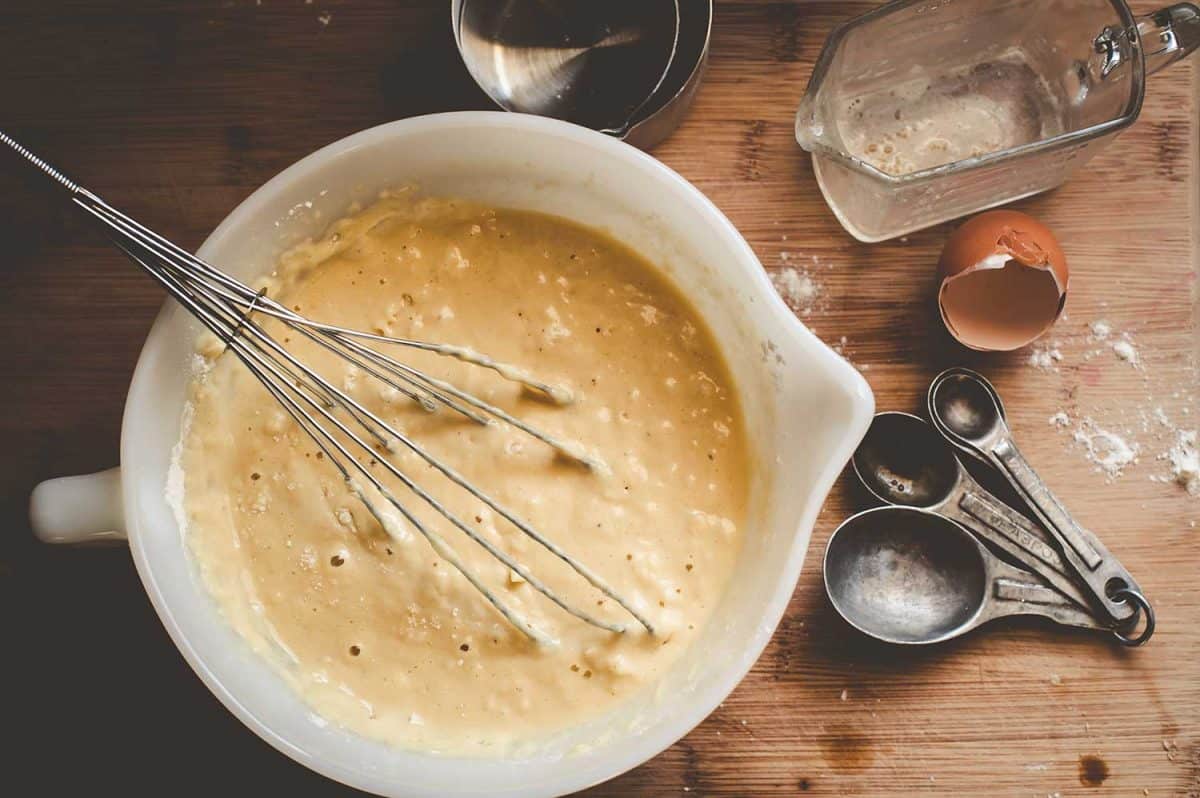
Stay away from self-rising flour if you are baking something that should not rise, like pie crust or crackers. The leavening agents in self-rising flour make it unsuitable for flat baked goods. Also, avoid self-rising flour in recipes that call for yeast.
What Happens If You Use Self-Rising Flour Instead Of Plain Flour?
Since self-rising flour already contains baking powder and salt, it will wreak havoc on your recipe if substituted for plain old all-purpose flour without any adjustments. The excess of leavening and salt creates bitter and salty baked goods. Also, the excess baking powder will affect the texture of the baked goods. The batter will likely rise too quickly and then deflate, leaving the texture fragile and coarse.
With careful adjustments to the recipe, however, many people find that self-rising flour works fine in place of plain flour. If you are curious about how to adjust a recipe to use self-rising flour, keep reading! We address it in the next section.
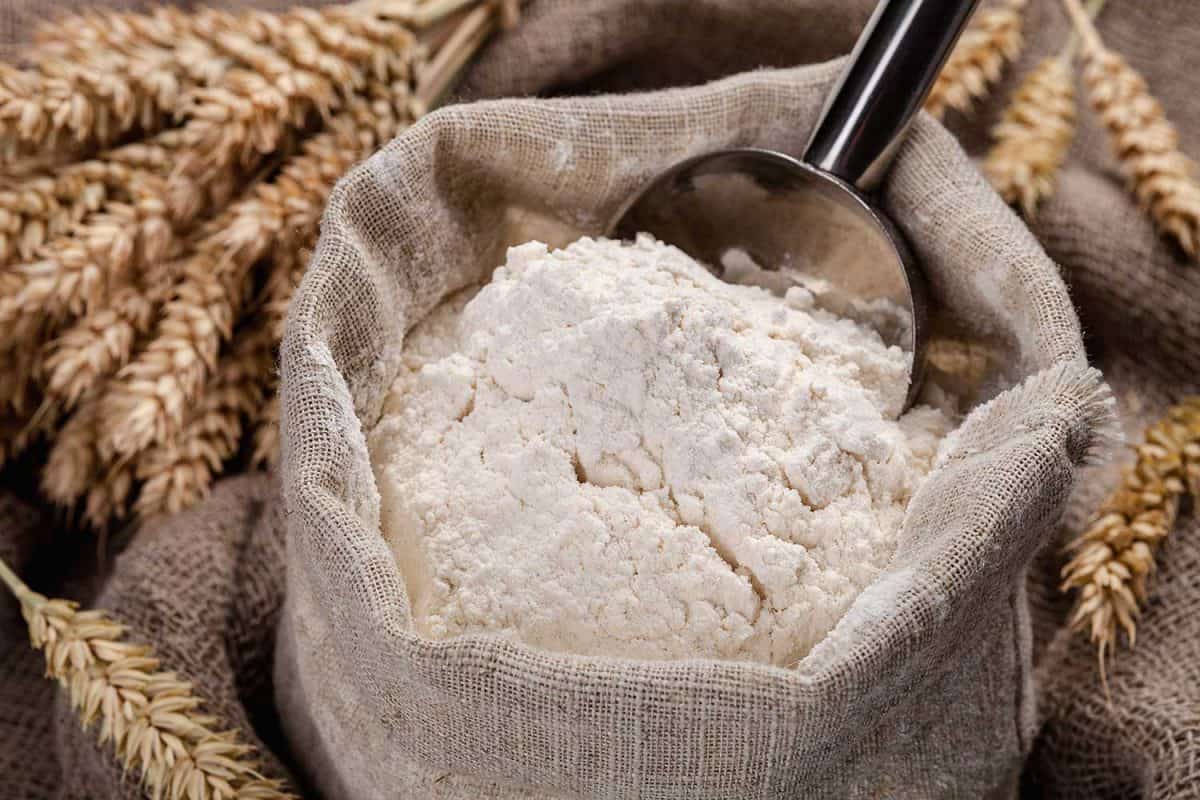
Substituting Self-Rising Flour for Plain Flour
We've already established that self-rising flour should not be used as a direct substitute for plain flour. Fortunately, many recipes that call for all-purpose flour can be tweaked slightly to allow a self-rising flour substitution. Let's consider three scenarios that you might run across.
- Recipes that include baking powder but not baking soda. In this case, sub in self-rising flour and omit the baking powder and salt from the recipe.
- Recipes that include both baking powder and baking soda. In this case, use self-rising flour in place of all-purpose flour, omit the baking powder and salt from the recipe, and continue to add the stated amount of baking soda.
- Recipes that include baking soda but not baking powder. It is best not to use self-rising flour for this type of recipe.
It is important to note that different flour brands use varying ratios of baking powder to flour in their self-rising flour blends. That being said, using the adaptions listed above may yield slightly different results than if the recipe is followed to a 'T,' but likely not enough to notice.
What Is The Difference Between Self-Rising Flour And Bread Flour?
Self-rising flour and bread flour have some important distinctions. As we've mentioned above, self-rising flour contains baking soda and salt and is a soft, low-protein flour. These qualities produce baked goods that are fluffy, soft, and tender. Bread flour, on the other hand, has no added leaveners and has a much higher protein content. That makes it great for baking firm, chewy gluten-rich yeast breads.
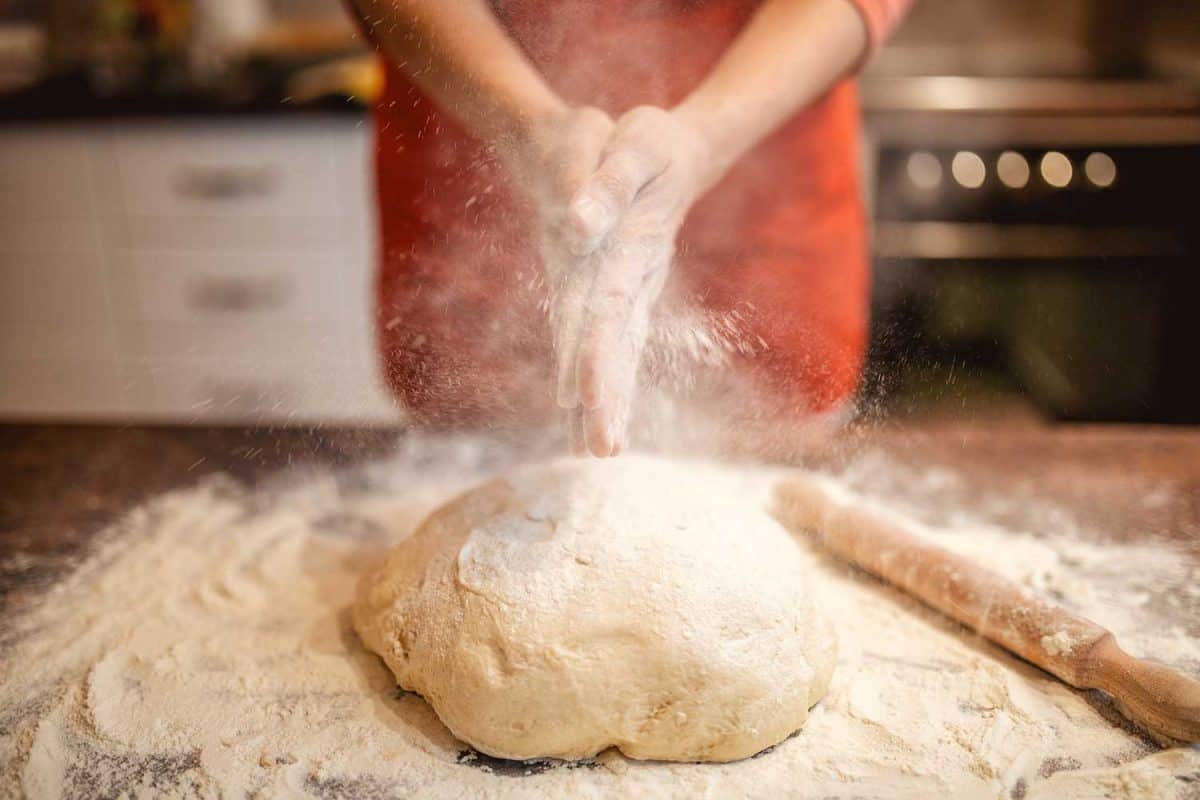
What Can I Use If I Don't Have Plain Flour?
Plain flour, more specifically called all-purpose flour, is highly versatile and a staple in most kitchens. Because it has so many uses, it tends to disappear quickly from pantry shelves and even grocery store shelves at times. (Pandemic life of 2020, we are looking at you!) If you've run out of plain all-purpose flour, never fear! You can use a plethora of alternatives depending on what you are baking.
Keep reading as we take a closer look at how cake flour, bread flour, self-rising flour, whole wheat flour, and gluten-free baking mixes can be used instead of plain flour.
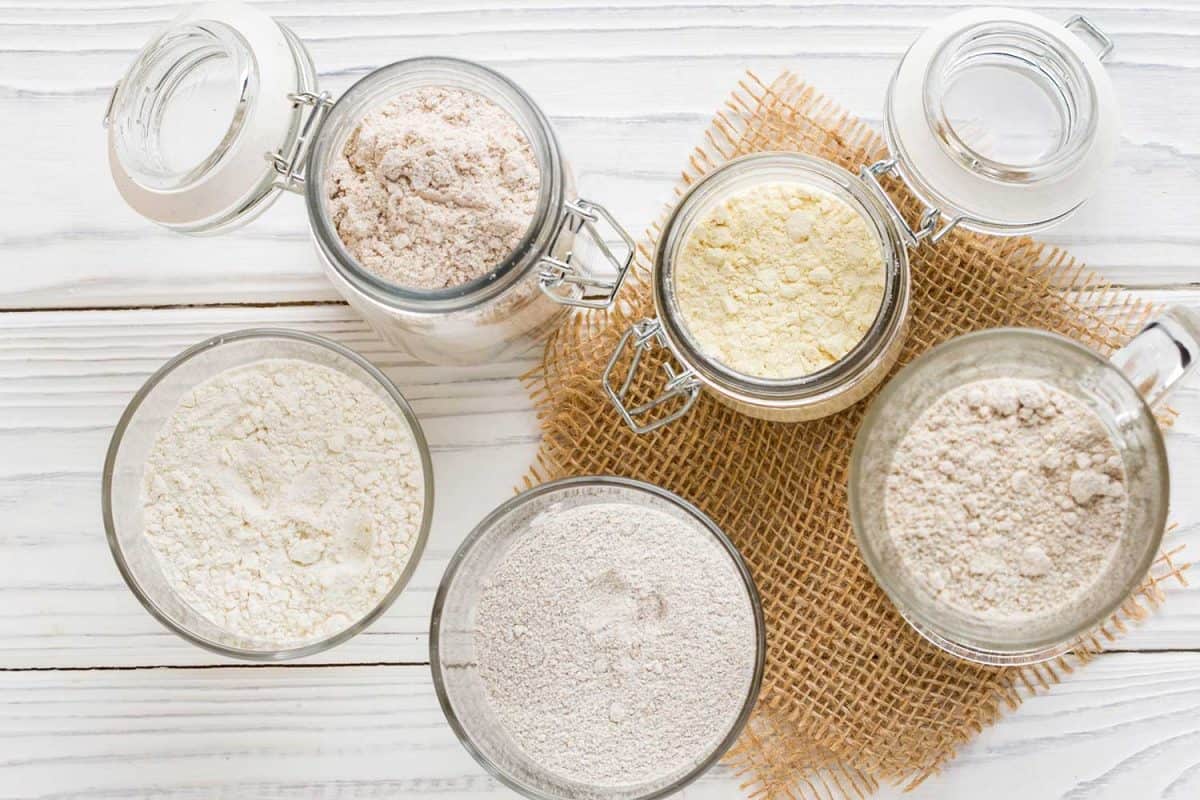
Cake Flour and Bread Flour
What you are baking really matters when choosing an alternative flour. Both cake flour and bread flour are 1:1 substitutes for all-purpose flour, but they differ in the texture they will produce. Substitute cake flour in cakes and other recipes that are looking for a light and tender consistency. Bread flour, on the other hand, produces a chewy texture and hence is a great substitute in cookies or breads.
Click here to see Swans Down Cake Flour on Amazon.
Self-Rising Flour
In some cases, self-rising flour can work but requires more adaptions to the recipe. You will remember that we've already discussed the ins and outs of that above, so scroll back up for a quick refresher.
Whole Wheat Flour
Another possible substitute for all-purpose flour is whole wheat flour, but there are a couple of caveats. Hearty and rich, whole wheat flour produces dense baked goods. It also absorbs more liquid than all-purpose flour, so 1:1 substitutions will result in drier baked goods. For this reason, expert bakers usually recommend substituting only half of the flour in a given recipe with whole wheat flour.
If you want to go full in with the whole wheat flour, try reducing the quantity to 7/8-cup for each cup of all-purpose flour the recipe calls for. That should yield better results.
1-to-1 Gluten-Free Baking Blend
Finally, as gluten-free baking surges in popularity, you may have a 1-to-1 gluten-free flour blend on your shelf. These products are carefully blended to be a 1-to-1 replacement for all-purpose flour in any given recipe and are ideal for cookies, cakes, muffins, pancakes, and more.
Click here to see a gluten free baking blend made by Bob's Red Mill on Amazon.
In Closing
Self-rising flour is useful in many types of baking, including our Saturday morning favorite, pancakes. Each type of flour has a distinct purpose, and your baking will benefit from knowing a thing or two about them. Even so, savvy bakers make smart flour substitutions when necessary without compromising the integrity of the recipe. Thanks for reading, and pass the syrup before you go!
If you found this article helpful, you may enjoy these as well.
How To Keep Pancakes From Sticking To The Pan
What Is The Best Container To Store Flour




